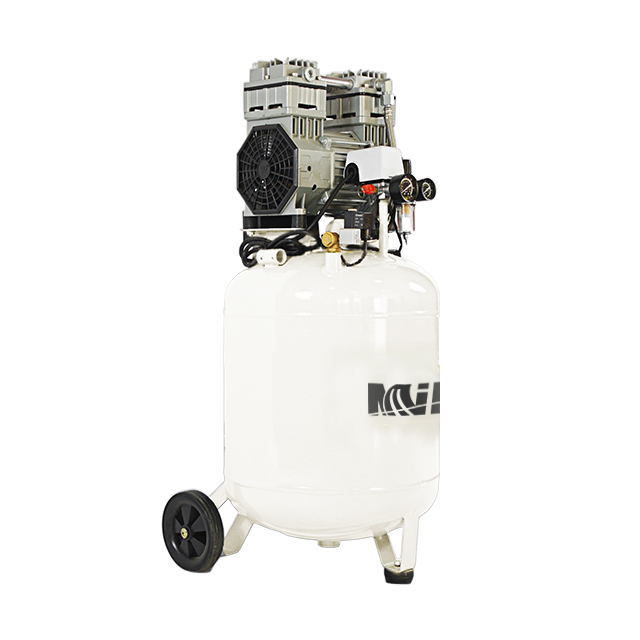Positive displacement compressors take in a certain amount of gas or air, and then increase the gas pressure by compressing the volume of a closed cylinder. Compressed volume is achieved by the movement of one or more operating components within the compressor block.
piston compressor
The piston compressor is the earliest developed and the most common compressor in industrial compressors. It has single-acting or double-acting, oil-lubricated or oil-free, and the number of cylinders is different for different configurations. Piston compressors include not only vertical cylinder small compressors, but also V-shaped small compressors, which are the most common.
piston compressor
Among double-acting large compressors, the L-type has a vertical low-pressure cylinder and a horizontal high-pressure cylinder. This compressor offers many benefits and has become the most common design.
Oil-lubricated compressors require splash lubrication or pressure lubrication for normal operation. Most compressors have automatic valves. The opening and closing of the mobile valve are realized by the difference in pressure on both sides of the valve.
Oil-free piston compressor
Oil-free piston compressors have piston rings made of Teflon or carbon, or, similar to labyrinth compressors, the piston and cylinder walls are deformable (toothed). Larger machines are equipped with cross couplings and gaskets at the spindle pins, as well as ventilation inserts to prevent oil from the crankcase from entering the compression chamber. Smaller compressors often have bearings in the crankcase that are permanently sealed.
The piston compressor is equipped with a valve system, which consists of two sets of stainless steel valve plates. The piston moves downward, sucking air into the cylinder, and the largest valve plate expands and folds downward, allowing air to pass through. The piston moves upward, and the larger valve plate folds and rises, sealing the valve seat at the same time. The telescoping action of the smaller valve disc then forces the compressed air through the hole in the valve seat.
Labyrinth-sealed, double-acting oil-free piston compressor with crossheads.
Diaphragm compressor
Diaphragm compressors are determined by their structural characteristics. Their diaphragms are mechanically or hydraulically actuated. Mechanical diaphragm compressors are used in small flow, low pressure or vacuum pumps. Hydraulic diaphragm compressors are used for high pressures.
A conventional crankshaft in a mechanical diaphragm compressor transmits the reciprocating motion through the connecting rods to the diaphragm
twin screw compressor
The development of the twin-screw rotary positive displacement compressor dates back to the 1930s, when there was a need for a high flow, steady flow rotary compressor capable of varying pressures.
The main part of the twin-screw element is the male rotor and the female rotor, while they rotate in opposite directions, the volume between them and the housing decreases. Each screw has a fixed, built-in compression ratio, which depends on the length of the screw, the pitch of the screw teeth and the shape of the exhaust port. For maximum efficiency, the built-in compression ratio must be adapted to the required operating pressure.
Screw compressors typically have no valves and no mechanical forces to cause an imbalance. That is, screw compressors can operate at higher shaft speeds and combine high gas flow rates with smaller external dimensions. The axial force depends on the pressure difference between the intake and exhaust, it must be able to overcome the bearing force.



